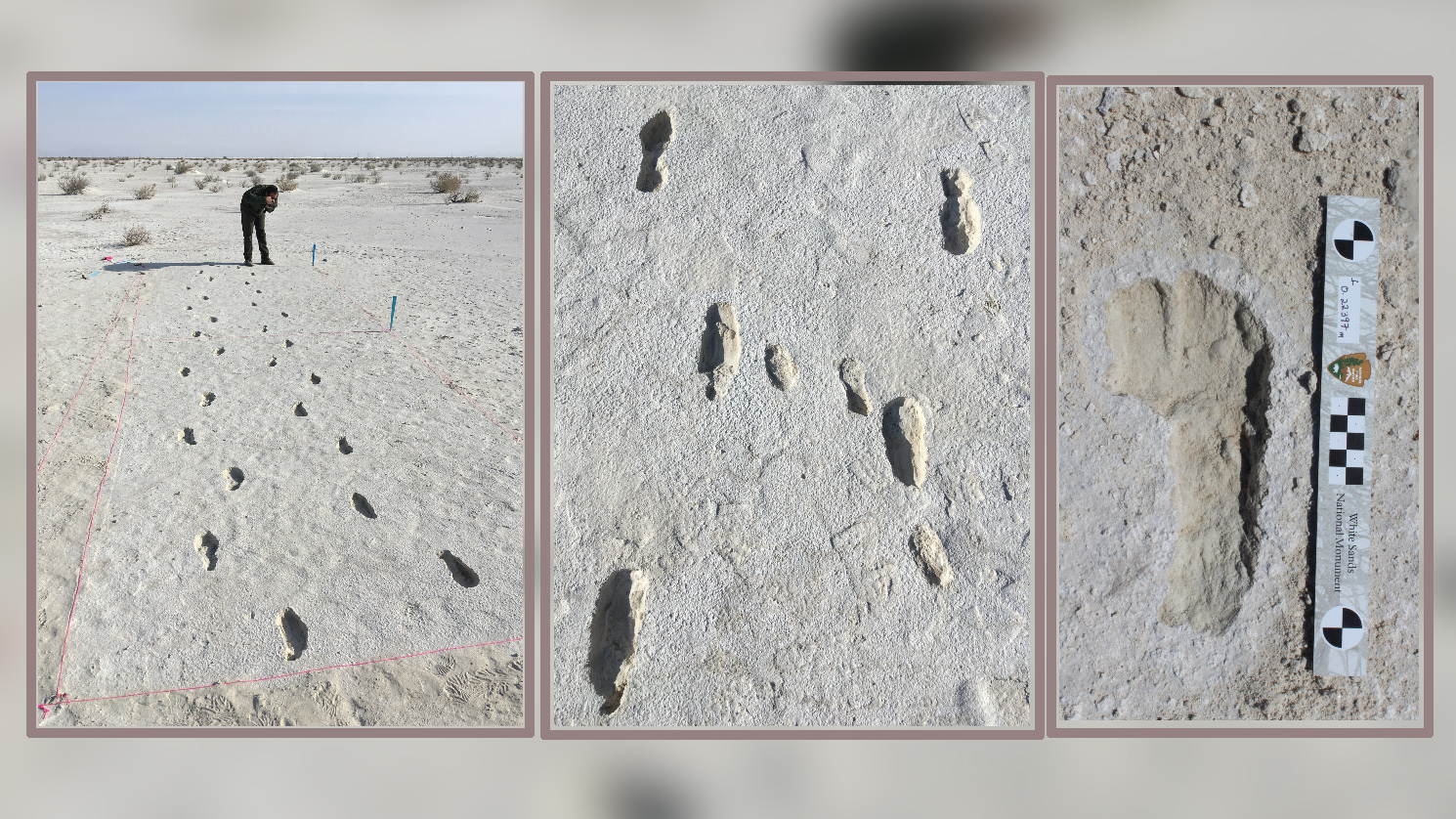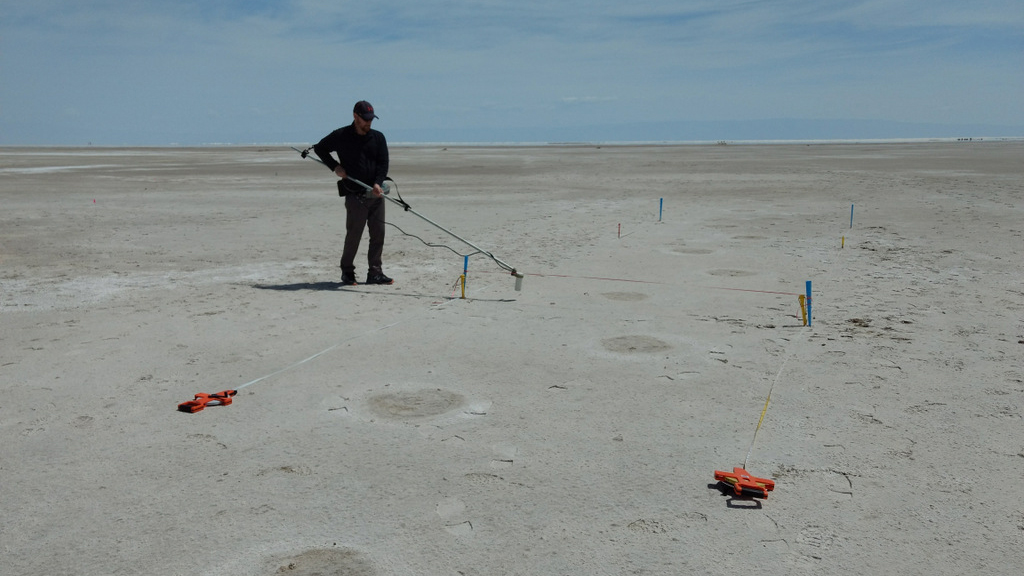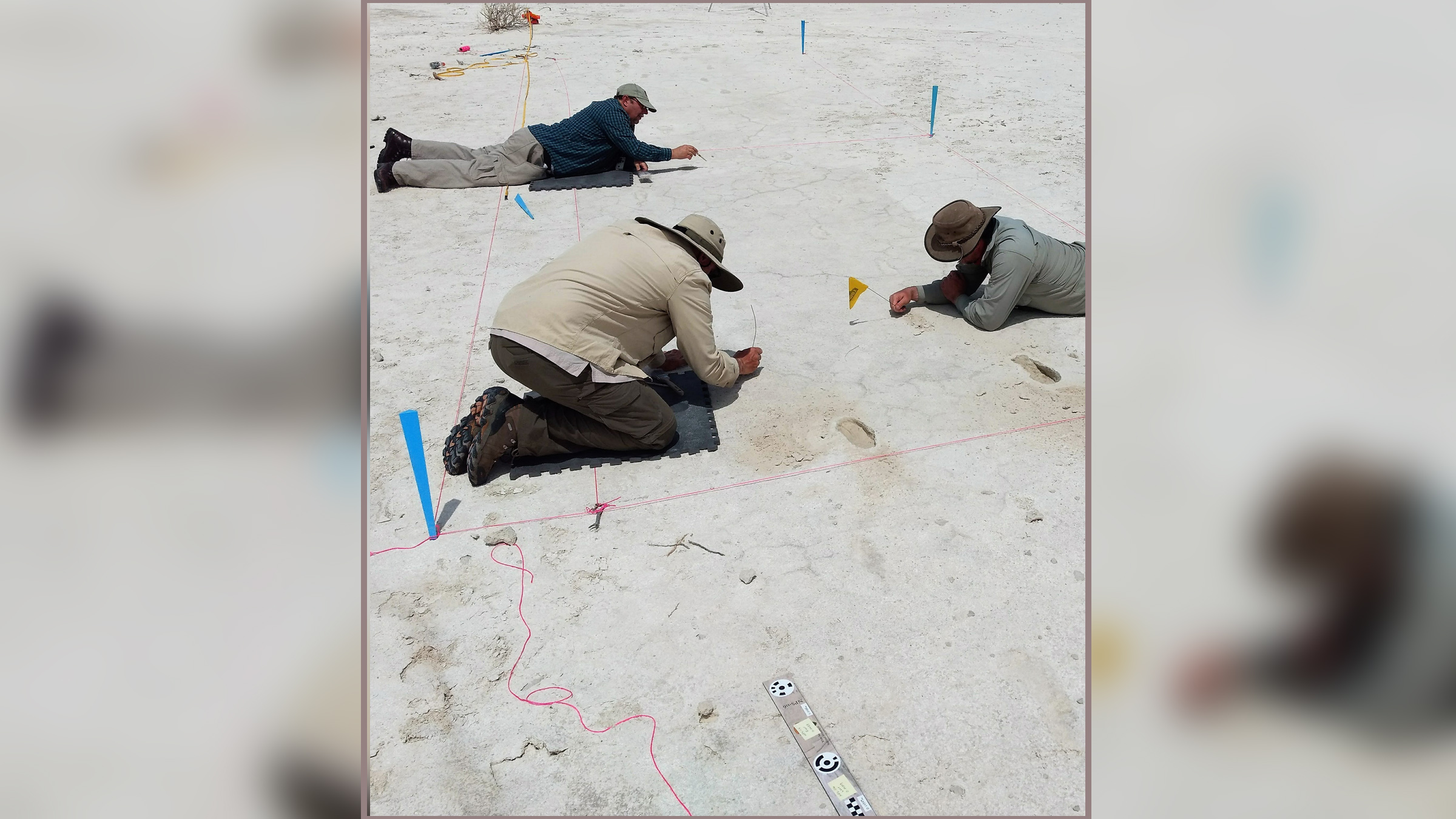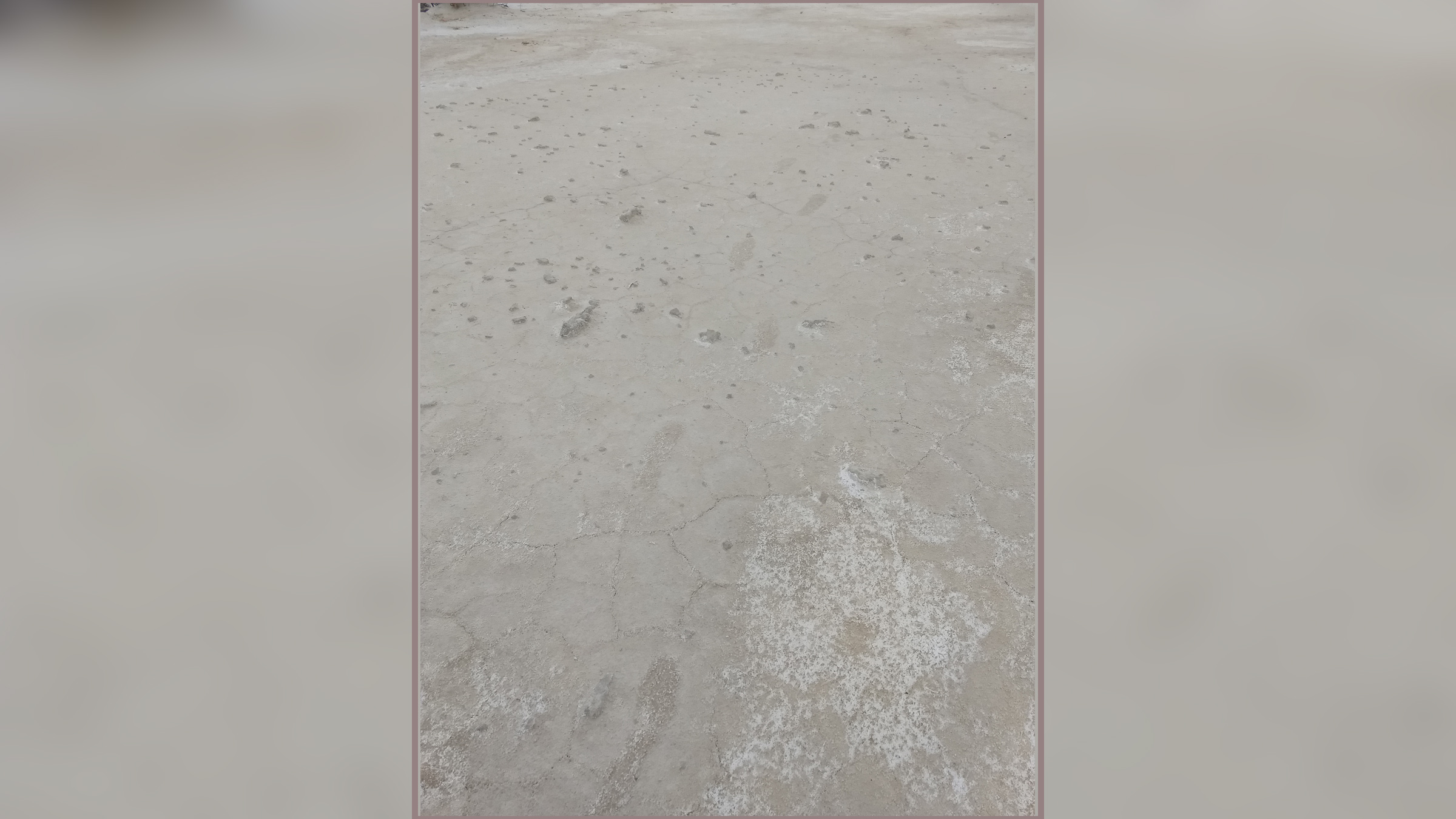10,000-year-old footprints show journey of squirmy toddler and caregiver
They were followed by a mammoth and giant sloth.

More than 10,000 years ago on the playa of what is now New Mexico, a woman on a journey set down the toddler she was carrying on her hip, readjusted, then picked up the child and set off again.
The remnants of this all-too-human moment are preserved in a trackway found in White Sands National Park — the longest late Pleistocene double human trackway found anywhere in the world. At 0.9 miles (1.5 kilometers) long, the set of tracks preserves an out-and-back journey taken at a fast clip by a single adult and a child under the age of 2.
During the journey, the adult — probably a woman, though possibly an adolescent male — came in close proximity to a giant sloth and a woolly mammoth, the trackway reveals.
Related: In photos: Mummified woolly mammoth discovered
"It's giving us these amazing snapshots in time," said Sally Reynolds, a paleontologist at Bournemouth University in the U.K. and the senior author of a new paper on the tracks published online ahead of its print publication in the December issue of the journal Quaternary Science Reviews.





Human tracks
The trackway was first discovered in 2017, thanks to National Parks employee David Bustos, who invited a group of scientists — including Reynolds' husband, Matthew Bennett, a geoscientist at Bournemouth University — to view the site. Bustos had noticed possible signs of footprints on the flat, arid playa landscape while patrolling the park, then a national monument.
Excavations revealed fossilized footprints just below the loose white gypsum sand. These tracks were originally made on wet ground. As the water evaporated, it left behind the minerals dolomite and calcite, which created rocky molds of the footprints.
Sign up for the Live Science daily newsletter now
Get the world’s most fascinating discoveries delivered straight to your inbox.
The tracks run north/northwest in a straight line in one direction before disappearing into the dunes. Next to them are the remains of the return south/southwest return journey, which appears to have been made by the same person, judging by the size of the footprints and the stride length.
Along the way, the adult tracks are sometimes accompanied by the footprints of a child under 3 years old. Northbound, the adult tracks are a little asymmetrical, evocative of a woman holding a child on one hip. At times, the child's footprints appear, perhaps during rest breaks when the adult put the squirmy toddler down. There are no child footprints on the return southbound journey, suggesting that perhaps the trip was taken in order to drop off the child somewhere.
Related: Photos: Stone Age human footprints discovered
"Motivation is something we can't really speak to in the fossil record, but it's something we want to know," Reynolds told Live Science. Reynolds speculated that perhaps the child was ill and needed to be taken to another camp where someone could help him or her. Whatever the reason for the journey, it seemed very goal-oriented: The footprints didn't deviate and the walker didn't dawdle. The stride length suggests that the person was walking about 5.5 feet (1.7 meters) per second, a brisk pace. The region was arid, but the journey was near an ancient, now-vanished lake, and the ground was muddy and slippery.
"We do know the journey was faster than normal speed and over terrain that would have been more tiring than normal," Reynolds said.
Animal encounters
The journey would have taken the pair through a landscape prowled by predators such as dire wolves and saber-toothed cats. Fortunately, the woman and child seem not to have been menaced; instead, they may have scared some of the animals that encountered their trackway. After the pair passed north, a set of animal tracks shows that a giant sloth approached their tracks, reared up — perhaps sniffing the air? — and then shuffled in a circle before veering away. The human then stepped on these sloth tracks when returning southbound. Previous research in the area suggests that humans hunted giant sloths, perhaps explaining why the sloth footprints reveal signs of nervousness on the part of the animal.
At another point, a mammoth crossed the humans' northbound trail (before the southbound return journey). The mammoth showed no signs of slowing or stopping, perhaps suggesting that it did not see the recent presence of a human as a threat.
There was no organic material under or around the footprints that could be analyzed with radiocarbon dating to reveal the age of the trackway, Reynolds said. Based on the known extinction dates for mammoths and giant sloths, the tracks must be at least 10,000 years old and possibly as old as 13,000 years, she said. She and her colleagues plan to publish data next year on the age of seeds found beneath other tracks in the park.
What is clear, Reynolds said, is that the playa at White sands preserves human footprints spanning over thousands of years. The region was a hub of human activity in the late Pleistocene, she said, and the footprints left there might help reveal how humans affected animal populations during this time period. (Large megafauna like mammoths and sloths went extinct shortly after humans arrived on the scene, and there is controversy over whether human hunting was to blame.) There are tracks in White Sands that show humans stalking sloths, Reynolds said, and even tracks left by children splashing in puddles that gathered in animal footprints.
"It's safe to say that the whole of White Sands is just one gigantic archive of fossil footprints," Reynolds said.
Originally published on Live Science.

Stephanie Pappas is a contributing writer for Live Science, covering topics ranging from geoscience to archaeology to the human brain and behavior. She was previously a senior writer for Live Science but is now a freelancer based in Denver, Colorado, and regularly contributes to Scientific American and The Monitor, the monthly magazine of the American Psychological Association. Stephanie received a bachelor's degree in psychology from the University of South Carolina and a graduate certificate in science communication from the University of California, Santa Cruz.










